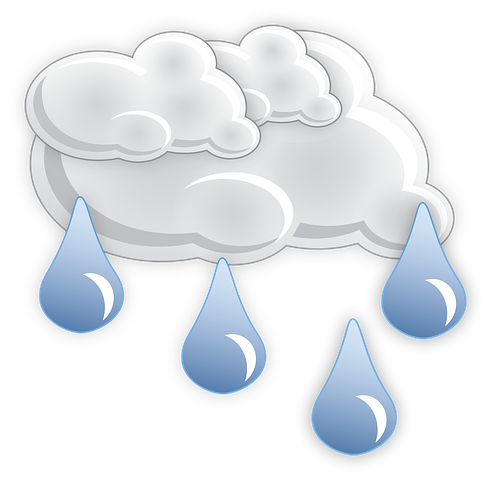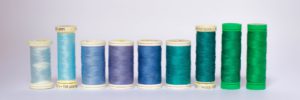FOCUS COLLECTION – TENTS
Have you ever looked at a tent and thought that it looked nice enough but you had no clue as to whether it would be suitable for your camping needs?
Is it waterproof? Why is it so light? Why is it so heavy? Will it stand up to harsh UV rays? Is it breathable? So many questions, so hard to find answers
Well, don’t worry readers because this article will answer the specific question “What does denier mean?” PLUS tell you what you need to know about fabric construction, show you to find out how waterproof a tent is and above all give you the break down of important tent specifications so you’ll know what all the jargon on the packaging means
WHAT DOES DENIER MEAN?
Ok, let’s get straight to it. Basically, Denier is a unit of measurement used to determine the thickness of the fibre in individual threads of fabric (1d = 1 gram per 9000 metres of fibre). The measurement was derived from a natural reference, in that a single strand of silk = 1 denier 
Example: 70d = 70g per 9000m of fibre length
For our purposes we can assume the higher the denier of our tent fabric, the thicker, heavier and therefore usually stronger it will be (bearing in mind that different fabrics have different strengths). The denier of typical lightweight nylon tents range from 10d fabric which would feel very sheer and soft (and not very durable) up to a thicker, more durable 75d fabric. Polyester tents will usually have a higher denier than nylon ones as polyester is not as strong as nylon (nylon in its basic form is around 30% stronger than Polyester). Flooring material will obviously have a much higher denier as it has to be more durable than the rest of the tent
THREAD COUNT
The thread count (T) is the measurement of the vertical and horizontal threads per square inch of fabric. For example 330T = a total of 330 threads within a square inch section of fabric. Generally, the higher the thread count the greater density and tighter weave of the fabric however this does not always equate to it being stronger as this will depend on the type of fabric and the denier of it
HOW DO I KNOW HOW WATERPROOF MY TENT IS?
The method used for measuring the water resistance of a (coated) fabric is the Hydrostatic Head (or HH) test. The most simplistic way this test is carried out is by securing a swatch of new fabric to the end of a clear, open-ended, cylinder (or column) that is calibrated in millimetres and slowly fill it with water until the water starts to penetrate through the fabric (the general rule of thumb is when three drops appear on the outer surface). You then observe the measurement on the cylinder and that gives you the Hydrostatic head measurement in millimetres otherwise known as the Waterproof rating
Waterproof ratings generally range between 500mm to 10,000mm in tents but do go higher and it goes without saying that the higher the number, the better the waterproof rating (and usually the heavier the tent) but a tent with a 1100mm rating can for example, stand up to a decent continual squirt from a garden hose (close up) with a fair bit of pressure behind it without leaking. A general waterproof rating for a run-of-the-mill 3 season tent is somewhere around 1500mm 
Bear in mind, a HH test will only indicate how waterproof a fabric is in its original (new) state and does not factor in the longevity (or lack thereof) of different coatings over time or the effects of mechanical forces (i.e. pressure on tent surfaces from wind & rain, tent surfaces rubbing together, pressure applied to the tent floor, etc.). It is best to speak with tent experts who have years of knowledge as to how well different types of fabrics and coatings hold up over time
The Waterproof rating is not the only factor in determining how dry your tent stays inside. Poor tent design can be another concern whereby window and door zippers may be continually exposed to the elements or where rain will enter the tent when they are opened (i.e. insufficient or non-existent awnings or vestibules). Also, inferior stitching and sealed seam quality are another HUGE consideration. Double stitching and quality sealed seams are a must in keeping water out. This cannot be stressed enough
OTHER SPECS YOU WILL COME ACROSS
A few other specifications you may come across and worth a mention are:
Polyurethane – Or usually seen as ‘PU’ in tent specs, is a type of coating applied to polyester and nylon fabrics to make them waterproof
Oxford fabric – Is a woven Nylon or polyester fabric that is unique for it’s “basket weave” structure. It is waterproof, tear resistant, breathable and very durable
UPF – stands for “Ultraviolet Protection Factor” which is the UV absorption rating for fabrics (SPF or ” Sun Protection Factor” relates to skin protection). The number that is attached to the end of it (i.e. 20, 30, 50+, etc.) represents the fabric’s ability to absorb harmful UV rays. The higher the number, the stronger the protection
IN SUMMARY
A typical example of a tent specification you might see in an ad or on the packaging of a tent may read as, 20D x 330T ripstop nylon 1200mm SIL/PU waterproofing this would translate to the breakdown below:
20D x 330T ripstop nylon 1200mm SIL/PU waterproofing
[denier] [thread count] [outer tent fabric] [HH rating] [waterproof coatings]
All the information given in this article and the article ‘What are tents made from?‘ (which is also part of the Odyssey Posse Focus Collection of posts about all things ‘Tents’) will enable you to piece together and understand tent specifications and assist you in determining the quality of the plethora of tents that are available today. And whilst specifications will vary from tent to tent, at least you will have the knowledge to assess different tents and determine what conditions they are best suited for
Until next time…
HAPPY ADVENTURES!





0 Comments